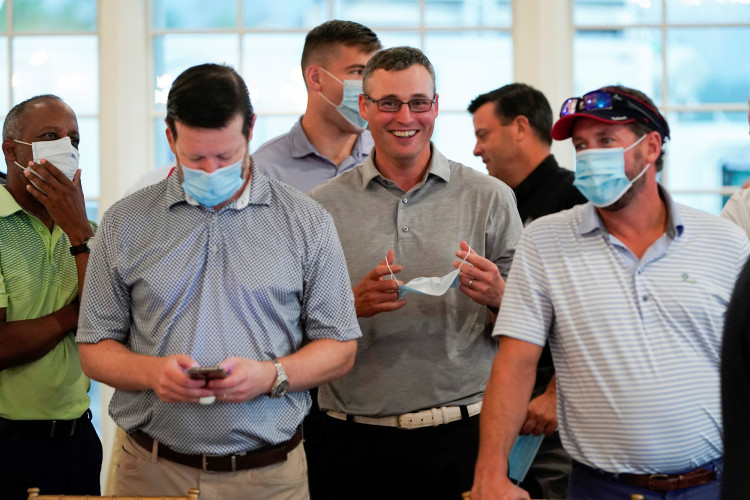Deaths due to COVID-19 in the United States might range from 410,000 to 620,000 by Jan. 1, 2021. These estimates are the latest from the Institute for Health Metrics and Evaluation (IHME), the independent global health research center at the University of Washington.
On June 24, IHME forecast 180,000 U.S. deaths by October 1. This estimate turned out to be an underestimate since total deaths as of Friday stood at 192,000. IHME also projected 317,697 deaths by Dec. 1. The U.S. now has to deal with 6.4 million confirmed COVID-19 cases, according to Worldometer. The U.S. still leads the world in total case numbers and deaths.
The latest IHME prediction released Friday also estimates the daily U.S. death toll could rise to nearly 3,000 per day in December compared WITH more than 1,000 deaths per day based on Worldometer data.
IHME released three new projections based on different assumptions: a most likely scenario; a worst-case scenario and a best-case scenario.
The most likely scenario, which sees the U.S. continuing along its leaderless path, estimates COVID-19 will kill 410,450 people by January 1. The worst-case scenario projects up to 620,028 deaths assuming states ease distancing restrictions and mask wearing.
On the other hand, the best-case scenario based on a universal mask mandate predicts 288,380 people in the U.S. will die from the disease by Dec. 31, 2020.
"The worst is yet to come. I don't think perhaps that's a surprise, although I think there's a natural tendency as we're a little bit in the Northern hemisphere summer, to think maybe the epidemic is going away," said Dr. Christopher Murray, IHME director.
IHME also projects the global death toll, which now stands at 879,000, will rise to 2.8 million by Jan. 1. The best-case scenario with widespread use of masks and other distancing measures forecasts a worldwide death toll of more than 2 million. The worst case scenario predicts 4 million total global deaths by Dec. 31, 2020.
IHME's latest U.S. forecast is based on the winter weather in the Northern hemisphere will keep people indoors most of the time, leading to a more rapid increase in infections. More infections will have the effect of keeping the death toll high.
Dr. Murray warned people in the Northern Hemisphere to be especially vigilant as winter approaches since the COVID-19-like pneumonia, will be more prevalent in cold climates. He said daily new cases, both globally and in the U.S., will likely rise starting October
"We are facing the prospect of a deadly December, especially in Europe, Central Asia, and the United States," noted Dr. Murray.
He did, however, say the science is clear and the evidence irrefutable: mask-wearing, social distancing, and limits to social gatherings are vital to helping prevent transmission of COVID-19.






